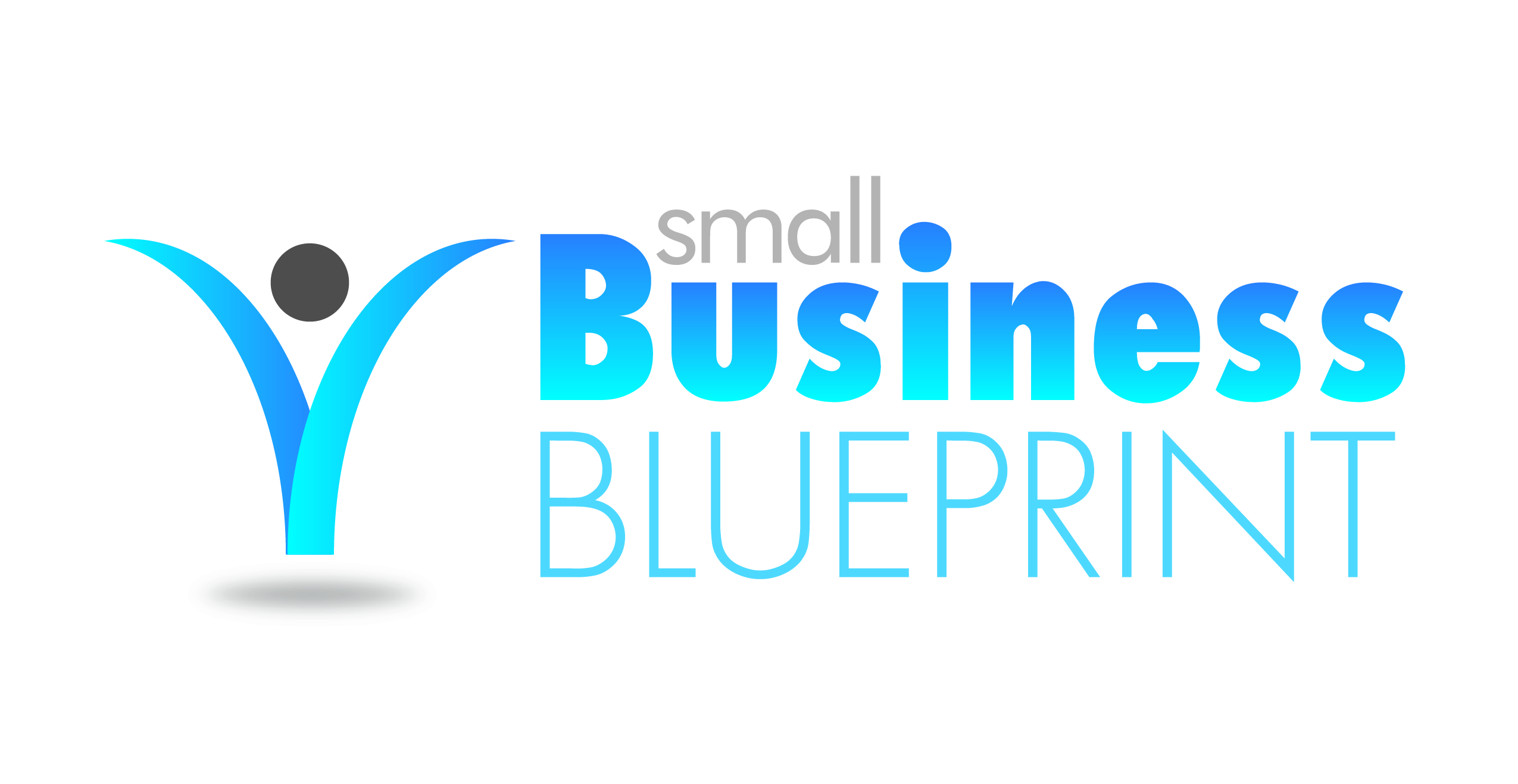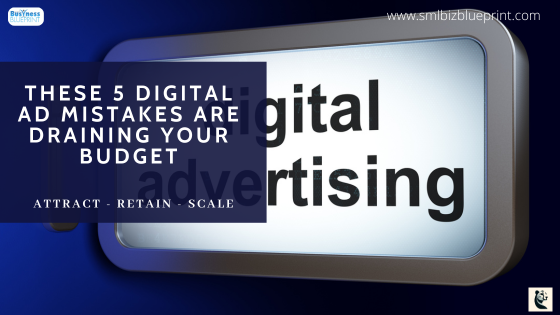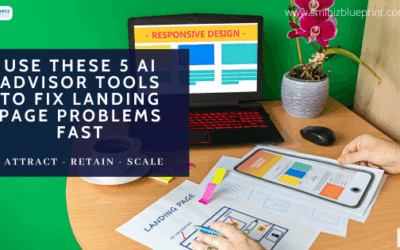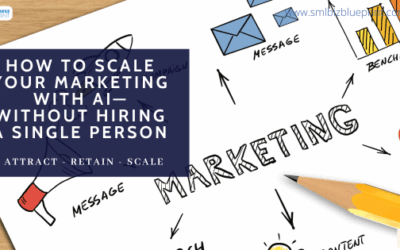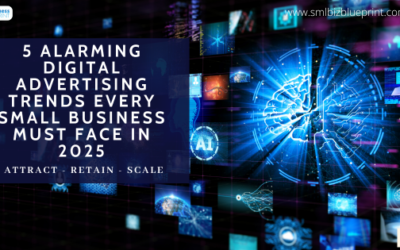You’ve increased your ad spend.
You’ve updated your creatives.
You’re doing everything the “experts” said to do—yet your digital advertising results are getting worse, not better.
If this sounds familiar, you’re not alone.
In 2025, small businesses are facing an uphill battle. CPCs are climbing. Platforms are shifting. Attribution is breaking. And too often, business owners are left wondering: “Why are we spending more and getting less?”
The truth? It’s not always the platform that’s failing you.
Sometimes, it’s the strategy behind the spend.
In this post, we’ll uncover five of the most costly digital advertising mistakes small businesses are making this year—mistakes that quietly kill ROI, flatten performance, and waste precious budget.
More importantly, we’ll show you how to fix them.
If your digital ad performance is slipping, this is where to start.

Mistake #1: Obsessing Over Vanity Metrics Instead of ROI
It’s easy to feel good about digital ads when the dashboards light up with impressions, likes, and click-through rates.
But here’s the hard truth: those numbers mean very little if they’re not translating into leads, sales, or meaningful engagement.
Far too many small businesses are unknowingly chasing vanity metrics—the kind of surface-level stats that look impressive but don’t drive business growth.
A high number of impressions? Great. But did anyone actually convert?
200 likes on a Facebook post? Nice, but did they click your offer?
A 3% click-through rate on Google Ads? That’s above average, but did those clicks become customers?
In 2025, digital advertising success is no longer about traffic. It’s about revenue alignment. If you’re not measuring your return on ad spend (ROAS), cost per acquisition (CPA), or media efficiency ratio (MER), you’re flying blind.
The Data Says It All
According to HubSpot, only 22% of businesses are satisfied with their conversion rates, even when their ads appear to be “performing well.”
WordStream reports that while the average CTR for Google Ads is around 3.17%, the average conversion rate is just 3.75%—meaning the vast majority of clicks do not lead to sales.
This disconnect between what you’re measuring and what actually matters is one of the biggest silent killers of small business marketing ROI.
The Real-World Impact
Consider this scenario: a local service business runs a Facebook ad that gains 1,200 likes in a week. It looks like a success, but there’s no lead magnet, no landing page, and no follow-up.
Weeks pass by with zero new inquiries. What felt like a win was, in fact, a drain on time and budget.
What You Should Do Instead
Shift your reporting focus from engagement to effectiveness.
Use dashboards that prioritise revenue-generating metrics: ROAS, CPA, MER.
Tag and track every campaign from ad to landing page to final conversion—especially if your sales cycle is longer.
Build a feedback loop between marketing and sales to assess not only traffic but also lead quality and close rates.
Pro Tip:
If a metric doesn’t connect to profit, it’s noise. Make sure every campaign starts with a clear outcome, and measure backwards from there.
You’re reviewing your latest report, and the numbers look great—10,000 impressions, a 4% CTR, and dozens of post likes. But then you check your sales dashboard: zero leads. That moment of excitement crashes into confusion. How can results look good and feel this bad?
This isn’t a performance issue—it’s a measurement issue. And it’s costing you clarity and control.
Mistake #2: Using Templated Creatives That Blend In
You’ve likely seen them—and maybe even run them: polished, professionally designed ad templates with stock photos, perfect symmetry, and generic copy.
The problem? Consumers scroll past them like wallpaper.
In 2025, ad fatigue is a genuine concern, and templated creative is one of the fastest ways to become invisible in a crowded feed.
Platforms like Meta, TikTok, and Google prioritise content that grabs attention and generates engagement. When your creative looks like every other ad out there, it gets deprioritised—or worse, completely ignored.
Why Generic Creatives Don’t Work Anymore
Consumers have evolved. They can spot a template, stock photo, or AI-written headline in seconds.
What they crave now is authenticity, imperfection, and human connection. That’s why short-form video, user-generated content (UGC), and real customer stories consistently outperform polished, brand-heavy assets.
Even platforms themselves are reinforcing this shift:
Meta reports that refreshing creative every 2–4 weeks can improve performance by up to 50%.
According to Social Media Today, ads featuring user-generated content (UGC) deliver four times higher click-through rates than traditional ads.
In other words, what used to work—even just a year ago—no longer cuts it.
What You Should Do Instead
Rotate creatives every 2–4 weeks to avoid ad fatigue.
Embrace UGC, testimonial videos, and native-style visuals that feel more like genuine content and less like ads.
Test different creative formats, such as story ads, reels, carousel posts, and short-form video clips.
Focus on messaging that mirrors real conversations, not marketing speak.
Pro Tip:
Your best-performing creative probably won’t look like an ad. Think native, imperfect, and real—it’s the content that stops the scroll that wins the click.
Ready to level up your business?
Sign up for our newsletter and get expert tips delivered weekly.
Mistake #3: Driving Traffic Without a Funnel
You can have the best ad creative in the world, but if you’re sending that traffic to a generic homepage or a dead-end landing page, you’re setting money on fire.
This is one of the most common—and costly—digital advertising mistakes small businesses make in 2025.
They pay to capture attention, then waste the opportunity by giving visitors nowhere meaningful to go. No compelling offer. No next step. No conversion path.
Digital ads aren’t about getting clicks. They’re about guiding a user from curiosity to commitment.
Why This Happens
Many small businesses treat ads like billboards—just getting their name or brand “out there.”
But with today’s costs and competitive attention economy, you can’t afford to run awareness-only campaigns with no clear objective. Traffic is just rented attention—you need a system to capture and convert it.
Here’s the reality:
Only 8% of first-time website visitors are ready to make a purchase (MarketingSherpa).
And yet, most ad traffic still gets sent to a homepage with too many choices—and no direction.
The Funnel Fix
A funnel doesn’t have to be complicated.
At minimum, it should:
Capture attention with a relevant landing page that matches the ad promise.
Offer a clear value proposition and one focused CTA.
Trigger a follow-up mechanism (like email nurturing, remarketing, or chatbot engagement).
Businesses that implement even basic funnel structures often see dramatic improvements:
Unbounce reports a 73% increase in conversion rates when campaigns use targeted landing pages and follow-ups.
What You Should Do Instead
Match each campaign to a custom landing page with a specific offer or call to action.
Use email sequences or remarketing ads to follow up with people who click but don’t convert.
Deploy a chatbot or lead magnet on the landing page to capture first-party data early in the journey.
Pro Tip:
Every ad should have one clear purpose, and every click should lead to a single action. Don’t drive traffic without a plan to capture it and convert it.
You launch a high-intent ad campaign and drive hundreds of clicks—only to send users to your generic homepage. There’s no lead capture, no offer, no follow-up. A week later, you’re still wondering where all that traffic went. It didn’t bounce—it vanished.
Without a funnel, even your best traffic is just noise in the wind.
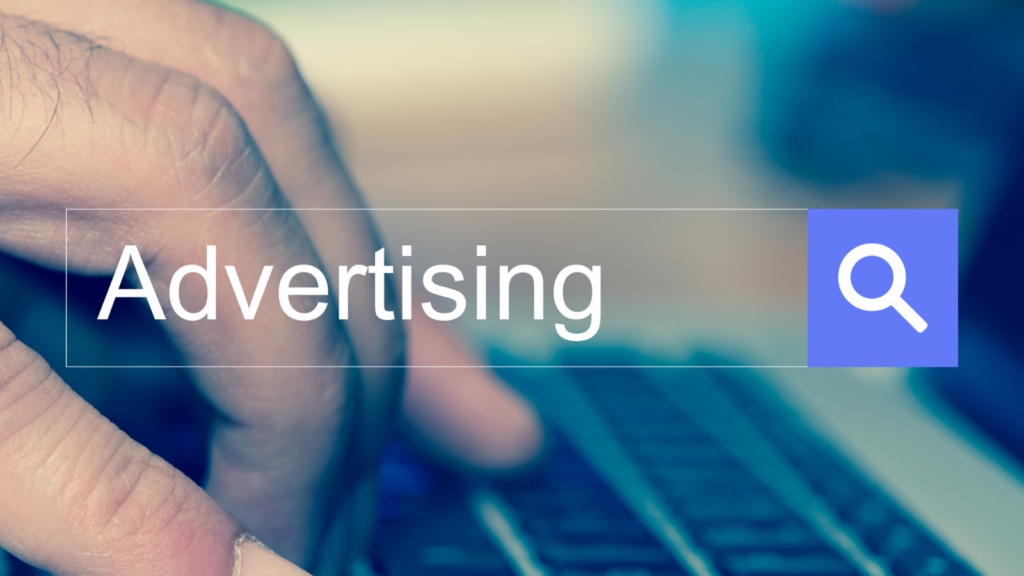
Mistake #4: Relying Too Heavily on One Platform
Many small businesses unknowingly put all their digital advertising eggs in one basket. For most, that basket is Meta or Google.
And while these platforms are powerful, relying on them exclusively creates a dangerous dependency, especially in 2025.
The digital advertising landscape is now algorithm-driven, privacy-restricted, and prone to abrupt change.
When the rules shift (and they will), being too reliant on a single platform can instantly tank performance, disrupt lead flow, and destabilise revenue.
The Platform Trap
Relying on one channel might feel efficient, but it’s fragile. Here’s what businesses are facing:
Algorithm changes that tank reach overnight.
Cost spikes due to competitive bidding or seasonal shifts
Targeting limitations from iOS privacy updates and cookie loss
Following Apple’s iOS 14.5 update, advertisers saw up to a 40% drop in campaign performance across Meta platforms, according to Tinuiti.
AdEspresso also reported that some advertisers experienced a 134% increase in cost per lead on Facebook after the change.
If your entire acquisition model lives inside one ecosystem, you’re not in control—you’re at the mercy of a platform that doesn’t owe you answers.
What You Should Do Instead
Build a multi-channel strategy: complement paid social with Google Ads, SEO content, email marketing, and even YouTube or TikTok if relevant.
Own your audience: invest in first-party data through email collection, lead magnets, or gated content.
Use CRM tools and analytics dashboards to track performance across channels and reduce dependency on platform-side reporting.
Pro Tip:
If you don’t own the platform, you don’t own the results. Diversify your traffic sources and build systems that work with the platforms, not because of them.
Don’t miss a beat in your business growth journey!
Join Pulse and stay ahead with expert tips and actionable advice every month.
Subscribe to Pulse Today
Mistake #5: Running Ads Without a Testing System
If you’re launching ad campaigns and hoping for the best, you’re not advertising—you’re gambling.
One of the most costly mistakes in digital marketing today is running ads without a structured testing system.
In 2025, the ad landscape is too dynamic to rely on “set it and forget it.” Consumer behaviour shifts, algorithms evolve, and messaging that worked last month can fall flat the next day.
If you’re not testing consistently, you’re leaving performance (and profit) to chance.
Why Testing Matters More Than Ever
Without testing, you can’t improve your:
Creative (headlines, images, videos, ad copy)
Targeting (audience segments, lookalikes, keywords)
Offers (lead magnets, price points, positioning)
A/B testing is no longer a luxury—it’s the foundation of sustainable advertising.
Yet, according to HubSpot, only 17% of small businesses consistently test multiple ad variations.
That leaves the majority running blind.
By contrast, businesses that implement structured experimentation see measurable gains:
VWO reports that brands using A/B testing increase conversions by 20% or more.
Facebook itself recommends running 3–5 creatives per ad set to find winners faster and lower CPAS.
What You Should Do Instead
Always test at least two versions of every ad—ideally, more.
Isolate variables: test one element at a time (e.g. image, then headline, then CTA).
Use platform data + human insight to interpret results.
Schedule regular reviews of ad performance and kill underperformers quickly.
Pro Tip:
Your first idea is rarely your best idea. Let data decide. Every ad you run is a test—so structure it that way from the start.
You keep running the same ad that used to work—and every month, results keep slipping. Internally, the team debates whether it’s the image, the targeting, or just “the market.” But no one really knows—because nothing new has been tested in months.
It’s not just a creative problem. It’s a decision-making bottleneck that testing could solve in days.
Conclusion
Digital advertising in 2025 isn’t broken—it’s just more complex, less forgiving, and far less tolerant of poor strategy.
If your results are flat or declining, it’s likely not because of the platform—it’s because of what’s happening behind the scenes:
- You’re tracking the wrong metrics.
- Your creatives blend in instead of standing out.
- You’re sending traffic into dead ends.
- You’re over-relying on a single channel.
- And you’re not testing nearly enough.
The good news? These mistakes are fixable—and once addressed, they become growth levers.
By rethinking how you measure success, where you send your traffic, how you build resilience, and how you iterate, you can stop budget leaks and start building a more consistent and scalable ad engine.
But getting attention is just the start. In our next article, we’ll show you 5 innovative visibility strategies to help your business stand out and stay relevant, without constantly increasing ad spend.
Ready to build a smarter, more resilient advertising system?
Discover how SmlBiz helps small businesses build lean, AI-powered marketing engines that deliver results without waste.
Action Steps
Audit Your Metrics
Stop tracking likes, impressions, and CTR in isolation. Focus instead on ROAS, CPA, MER, and customer acquisition cost. Align your metrics with revenue, not vanity.
Refresh Your Creatives Every 2–4 Weeks
Rotate into new formats, such as short-form video, testimonials, and user-generated content. Avoid polished templates that audiences scroll past without noticing.
Create a Funnel for Every Campaign
Never send paid traffic to your homepage. Build dedicated landing pages tied to your ads and install automated follow-up sequences (email, chatbot, retargeting).
Diversify Your Channels
Reduce risk by balancing Meta and Google with alternative platforms, such as YouTube, TikTok, or email marketing. Build an email list you own.
Implement a Testing System
Run A/B tests on creatives, copy, offers, and audiences. Document what works. Scale the winners, cut the losers fast.
Build a Strategy, Not Just Ads
Ads are one part of your system. Success in 2025 requires a connected strategy that aligns audience, message, offer, and platform, with data feeding the loop.
FAQs
Q1: What are vanity metrics in digital advertising?
A1: Vanity metrics are surface-level numbers like impressions, likes, and clicks that look good but don’t reflect actual business performance. They don’t tell you if your ad is generating leads, sales, or ROI.
Q2: How often should I refresh my ad creatives?
A2: To combat ad fatigue and improve engagement, refresh your creatives every 2–4 weeks. Use a mix of formats like video, UGC, carousels, and native-style visuals.
Q3: Why shouldn’t I send ad traffic to my homepage?
A3: Your homepage isn’t designed to convert—it’s too general. Instead, use dedicated landing pages tailored to the campaign’s message and offer, with one clear call-to-action.
Q4: Is it risky to rely on one ad platform?
A4: Yes. Over-reliance on a single platform (like Meta or Google) leaves you vulnerable to algorithm shifts, rising costs, or policy changes. Diversify your traffic sources and own your first-party data.
Q5: What is A/B testing in advertising?
A5: A/B testing compares two or more ad versions to see which performs better. It helps you improve ROI by identifying the most effective headlines, visuals, CTAs, or offers.
Q6: How do I know if my ads are working?
A6: Track metrics like ROAS (return on ad spend), CPA (cost per acquisition), and conversion rates. These revenue-linked metrics give a clear picture of actual performance—not just engagement.
Q7: What’s the first step to fixing my digital ad strategy?
A7: Start with an honest audit: Are your metrics tied to results? Do you have a funnel? Are you testing consistently? Fix the foundation before scaling your spend.
Other Articles
5 Alarming Digital Advertising Trends Every Small Business Must Face in 2025
How to Scale Your Marketing with AI—Without Hiring a Single Person
Use These 5 AI Advisor Tools to Fix Landing Page Problems Fast
